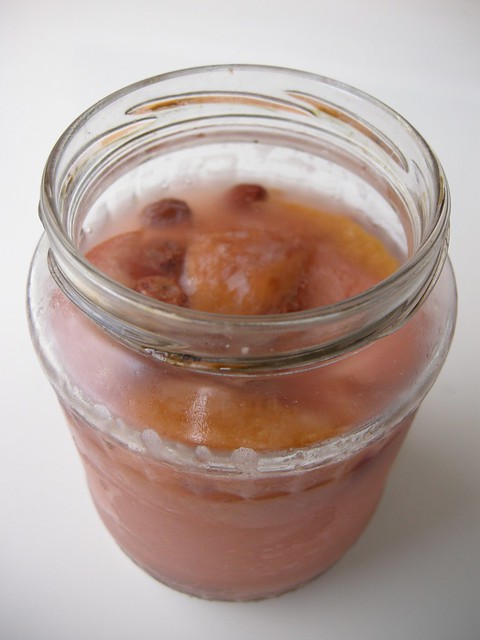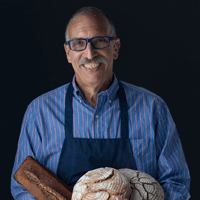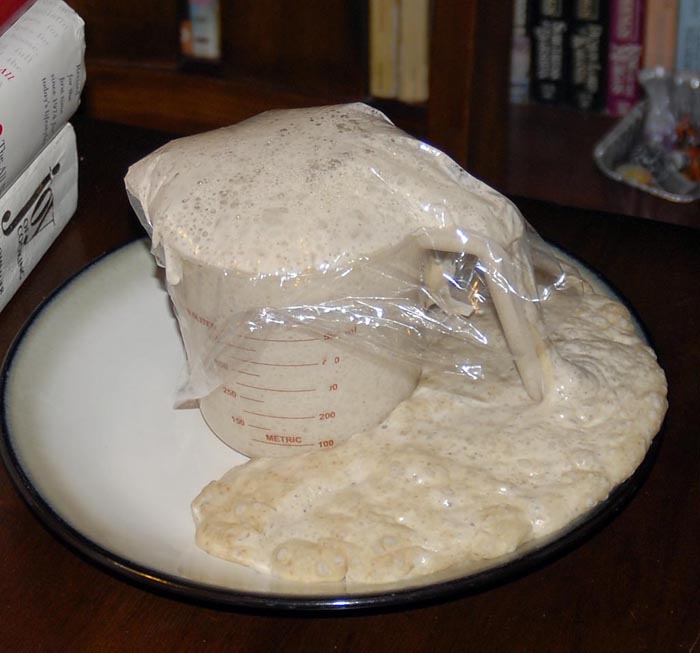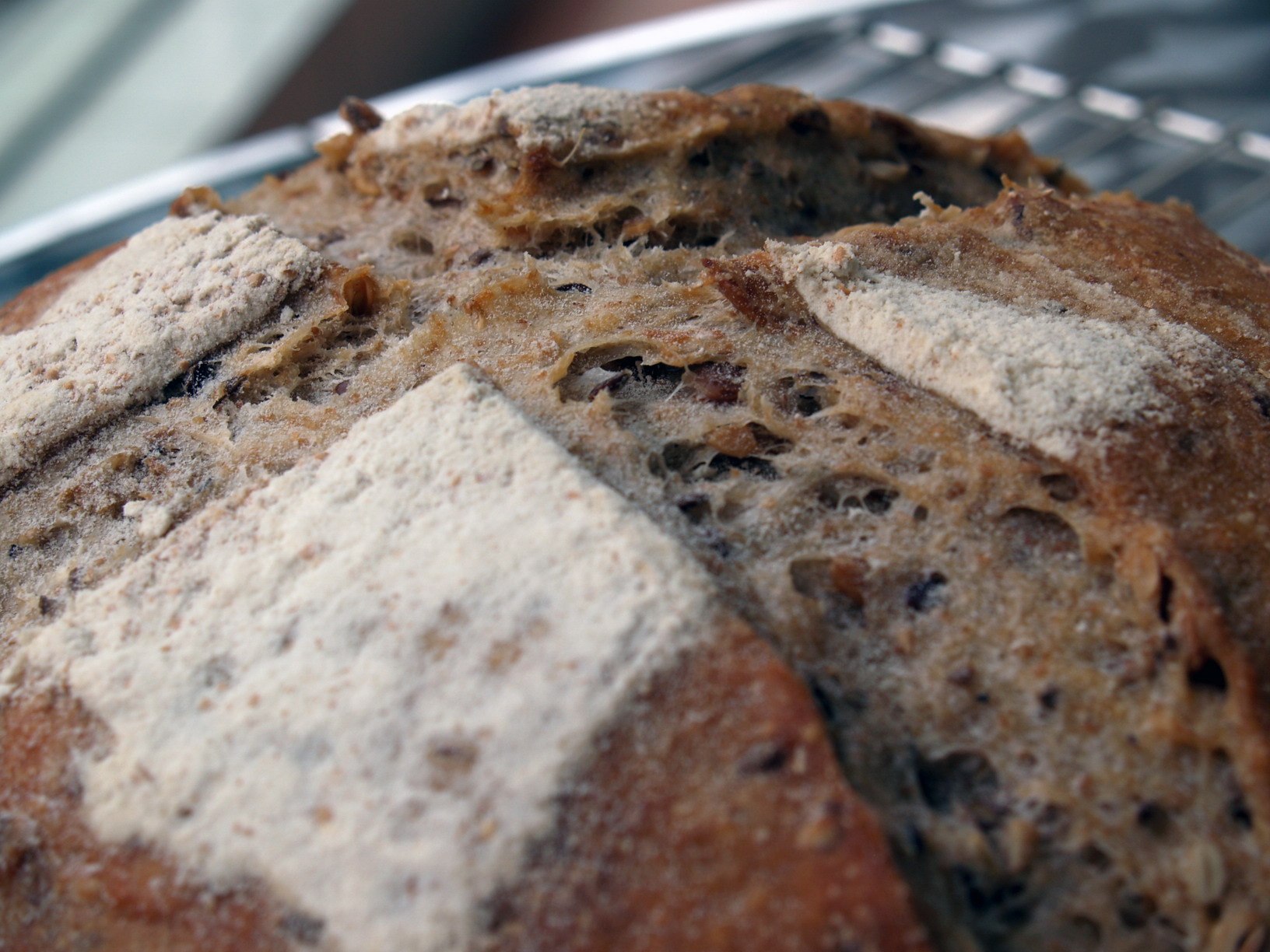This week, I have been reading Sandor Katz's wonderful book, The Art of Fermentation. For most part, the book is not about bread, but as bread is mostly about fermentation, the book is helping me a lot in understanding what happens in the dough and when growing yeasts.
Last night as I was reading the book again, I had a revelation: you can drink yeast water. And in fact, a lot of people are doing it already--they just have a different name for the drink!
Or what do you say? This recipe for fruit mead from The Art of Fermentation looks just like the one I used to start my yeast water (except that I used some black tea in it at first):
Mead is honey wine. It can be flavored in infinite variations, and many of the fruits and other botanical flavorings you can add to it also serve as sources of yeasts and yeast nutritients.
[...]
My typical proportion, measuring by volume, is 1 part honey to 4 parts water. For a lighter mead (or if I'm adding a large amount of sweet fruit), I'll dilute each part honey with 5 to 6 parts water.
[...]
Thoroughly dissolve honey in water by vigorous stirring or shaking. Be persistent if necessary. Leave the vessel capped, or cover it to keep flies away; any covering, from a cloth to a tight-fitting lid, is okay.
[...]
Stir or shake, vigorously and frequently, several times a day for a sustained couple of moments.
[...]
After a few days of frequent stirring, you will start finding the honey water with bubbles on the surface and an effervescent release when you stir. [...] Keep shaking and stirring a few more days and the bubbles will build into a formidable force.
...and so on. The instructions continue to explain how you can then further process the mead to get more alcohol and a more refined taste by aging the drink.
From all of this, I'm ready to equate yeast water = fresh mead.
Another revelation from this section of the book (to me) was that the purpose of the shaking is to get oxygen into the mix so that yeast cells can multiply.
S. cerevisiae and many other yeasts, much like the cells of our bodies, are capable of both anaerobic fermentation and oxidative respiration. In the oxidative mode, yeasts grow and reprodue much more efficiently but do not produce alcohol. Vigorous stirring stimulates yeast proliferation by providing aeration.
I still don’t have all the answers, especially for the difference in bacteria between sourdough and yeast water, but this is getting interesting--and soon, I’m going to start a new batch of yeast water, this time with the idea of drinking most of it and baking only with the remains…
---
And then to my most recent bake, with sourdough and yeast water.
For a long time already, I have been baking most of the bread we eat at home, so when this summer we bought a toaster and my wife and kids started buying toast bread from the store, I knew I had to do something about this. Buying toast bread (of all things) was diluting all my credibility as a real bread home baker! ;)
I have been experimenting with different bread recipes for a while now, but wasn't satisfied until I finally found txfarmer’s recipes again. Although I had seen and admired them before, I had never gotten around to trying them before now. And I had never worked the dough for 40 minutes before either. Doing this, as suggested by the recipe, made all the difference!
The bread is soft, delicious and has a fine, sweet and a little sour taste that I enjoy.
My older son says he likes it but still prefers the storebought with no taste at all… So, maybe next I’ll try to do this without any sourdough. Let’s see!
I’m not going to rewrite the whole recipe here as you can get it from txfarmer's blog. But I made a few changes, which may or may not be interesting. So, here we go.
The yeast water had been sitting in the fridge for about a week and gotten a lot of color from the fruit (peaches and grapes):

I used 100 grams of sourdough starter in one build (at 100 % hydration) and 200 grams of yeast water in two builds (100 % hydration) and reduced the amount of milk accordingly. Also, the original recipe used milk in the starter as well. I used water as yeast water comes with its own water…
Final dough:
- 100 g sourdough starter, refreshed about 8-10 hours before mixing the dough
- 200 g yeast water starter (built in two steps during the same 8-10 hours)
- 450 g bread flour
- 60 g sugar
- 50 g butter
- 120 g egg whites
- 6 g salt
- 160 g milk
I’m very happy with the results and will definitely be making some variation of this bread again. Next, with some darker grains, maybe a bit of rye or at least wholegrain wheat.














